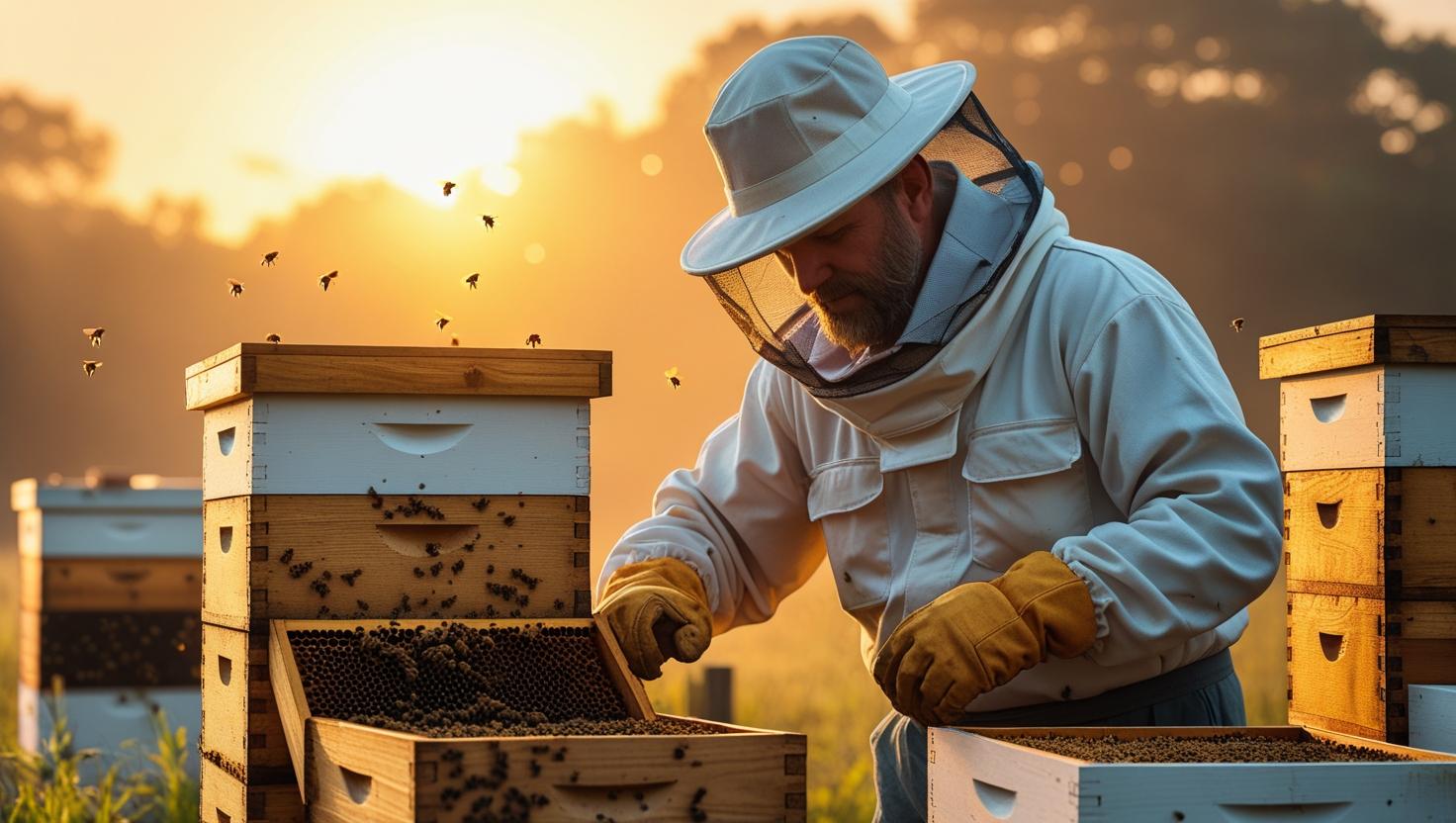Are you interested ways to learn how to be a beekeeper, but unsure of where to start? Whether you envision gathering your own honey or aiding in the well-being of pollinators, this guide for beginner beekeepers will guide you through each stage of the process—from selecting your initial hive to collecting your first jar of honey.
Why Choose Beekeeping?
Beekeeping is more than just a pastime — it serves as a means to:
- Support local ecosystems by aiding in pollination
- Produce natural honey, beeswax, and propolis
- Acquire an engaging, practical skill
- Contribute to the preservation of declining bee populations
Did You Know? According to the USDA, Three-fourths of the world’s flowering plants and about 35 percent of the world’s food crops depend on pollinators to reproduce.
Step 1: Grasp the Fundamentals of Beekeeping
Before purchasing bees, take the time to educate yourself by:
- Reading beginner-friendly books such as Beekeeping For Dummies
See our previous post on the Top 5 Beginner Beekeeping Books
- Listening to beekeeping podcasts or watching YouTube tutorials
- Joining a local beekeeping club or enrolling in a class
Step 2: Select the Appropriate Hive and Equipment
Here’s what you’ll require to kick off your beekeeping journey –
Beginner Beekeeping Starter Kit:
- Hive: A Langstroth hive is commonly used by beginners due to easy access to supplies
Look for equipment locally or through reputable suppliers like Blythewood Bee Co.
- Bees: Order a local nucleus colony (nuc) or a package containing a queen
- Protective Gear: Bee suit, gloves, and veil
- Pro tip – If you live in a warm climate, a good ventilated bee suit is well worth your investment – Sting Stopper (affiliate link)
- Tools: Smoker, hive tool, bee brush, and feeder
Step 3: Establish Your Apiary
Choose a site that is:
- Sunny and protected from strong winds
- Close to a clean water source
- Away from busy areas and neighbors
Check your local zoning regulations, as some regions have limitations on backyard beekeeping.
Step 4: Introduce Your Bees
Upon the arrival of your bees:
- Carefully transfer them into the hive
- Position the queen cage inside and allow the colony to accept her
- Provide the bees with sugar syrup for the initial weeks
Step 5: Supervise and Sustain Your Hive
Inspect your hive about every 10 days days by:
- Searching for eggs, brood, and indications of a healthy queen
- Checking for pests like varroa mites
- Ensuring the bees have adequate food and space
Tip: Maintain a beekeeping journal to monitor hive health and seasonal variations.
Step 6: Harvest Your Honey (Eventually!)
You won’t be harvesting honey in the initial months—bees require time to strengthen their colony. Once your hive is robust and productive, you can enjoy:
- Raw honey
- Beeswax for candles or balms
- Propolis and pollen for natural remedies
Final Thoughts: Beekeeping Is an Adventure
Embarking on beekeeping as a novice may seem daunting, but with the right expertise and equipment, it’s exceptionally gratifying. From your initial hive inspection to your maiden honey harvest, each phase brings you nearer to nature—and a greater admiration for these remarkable pollinators.
Ready to Commence Your Beekeeping Journey?
Subscribe to our blog to get notified of new post


Leave a Reply